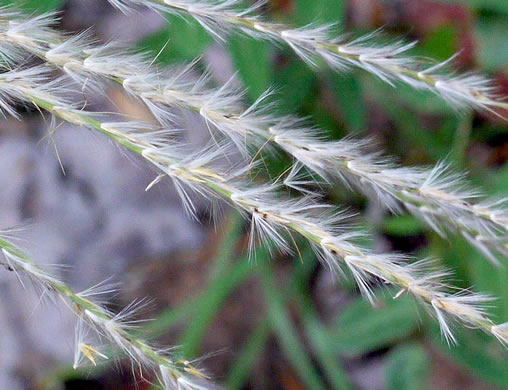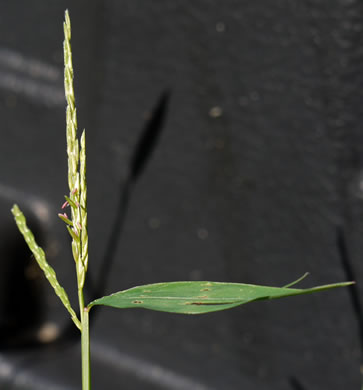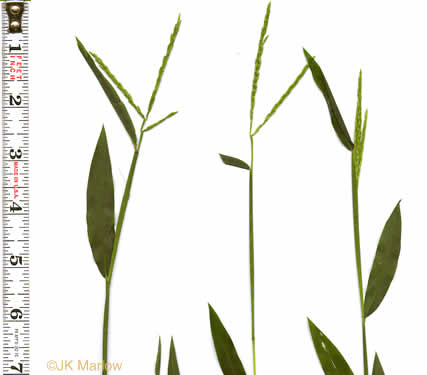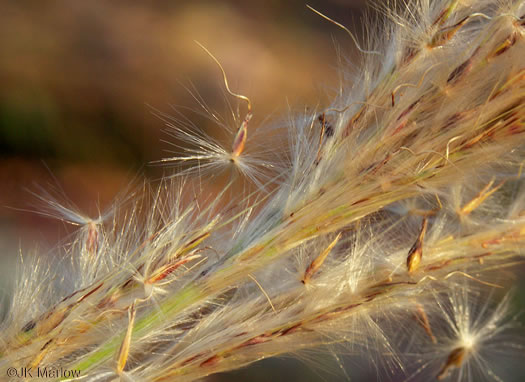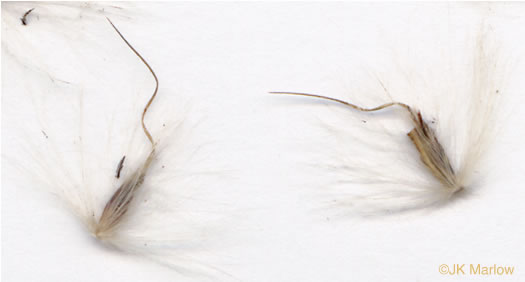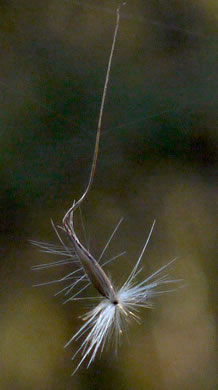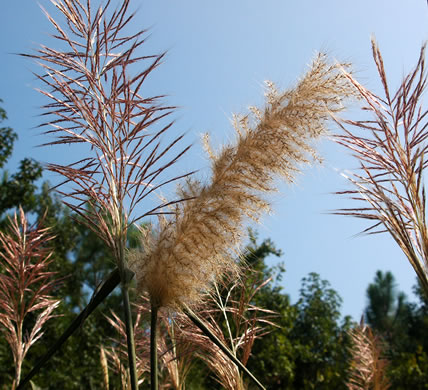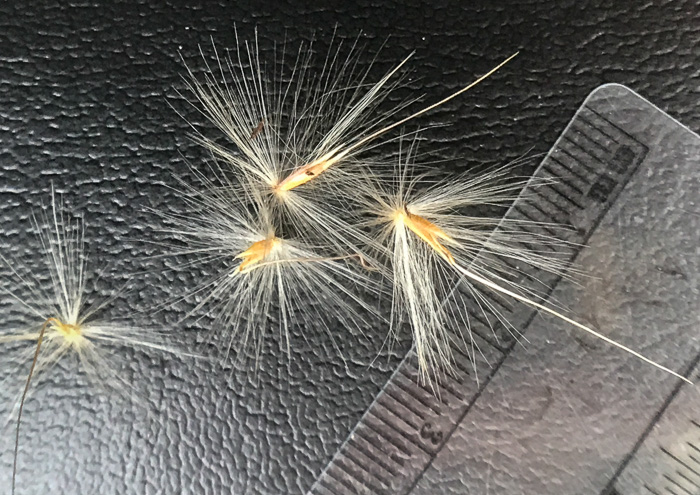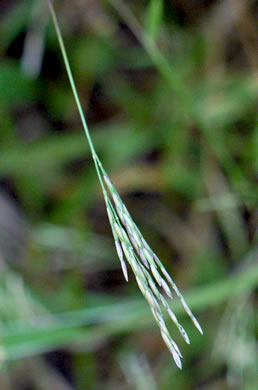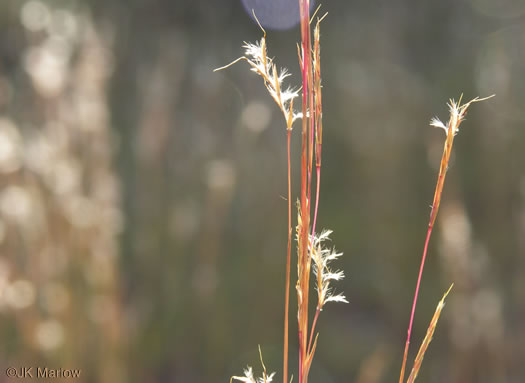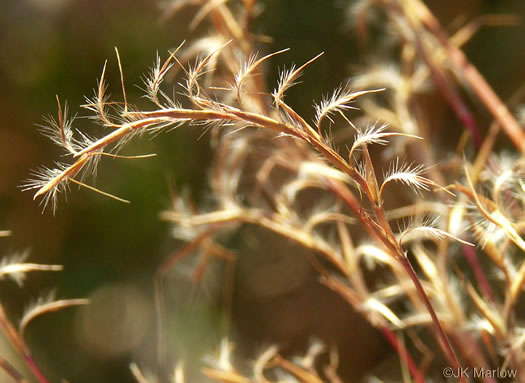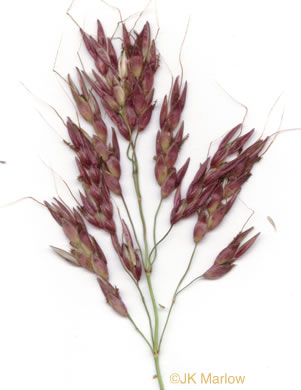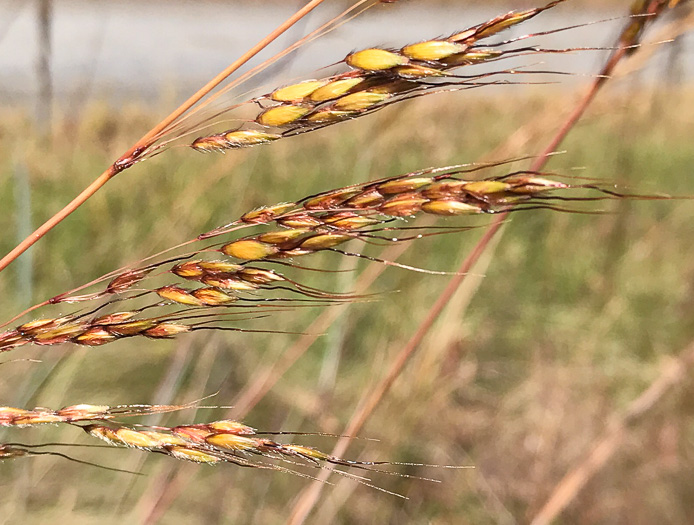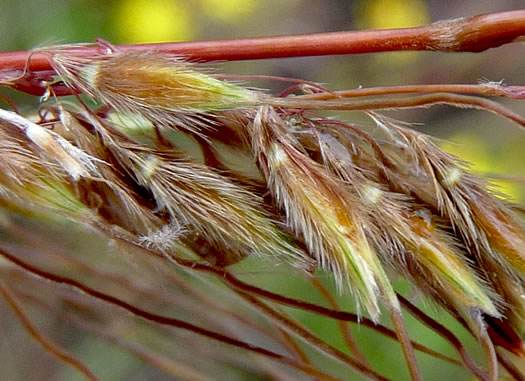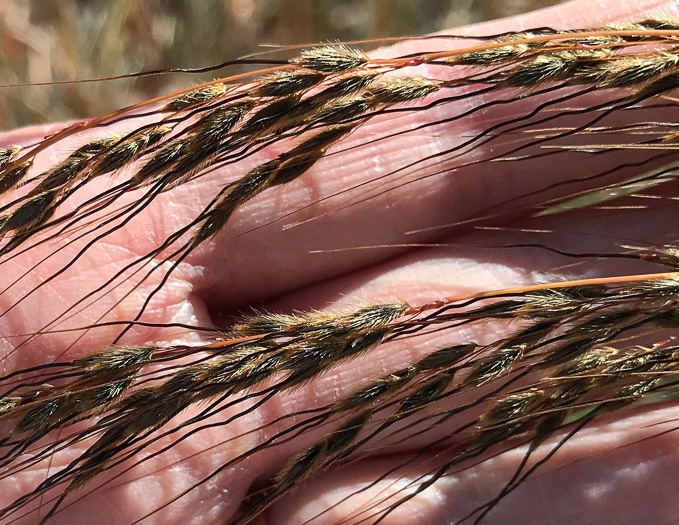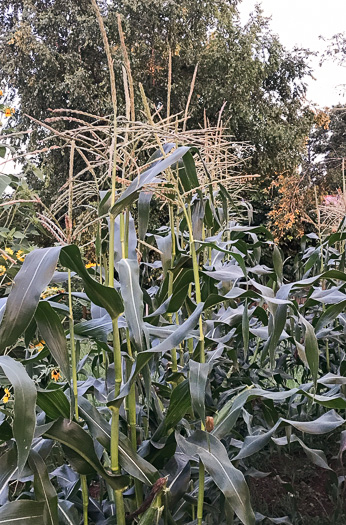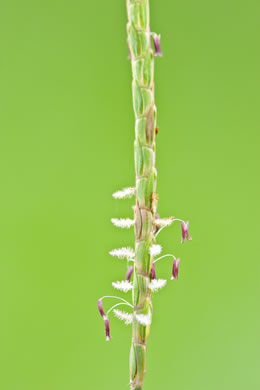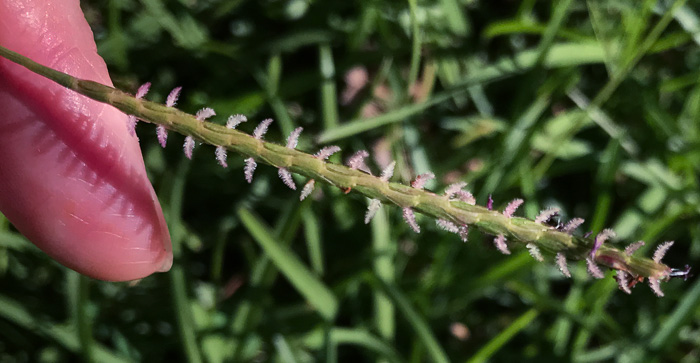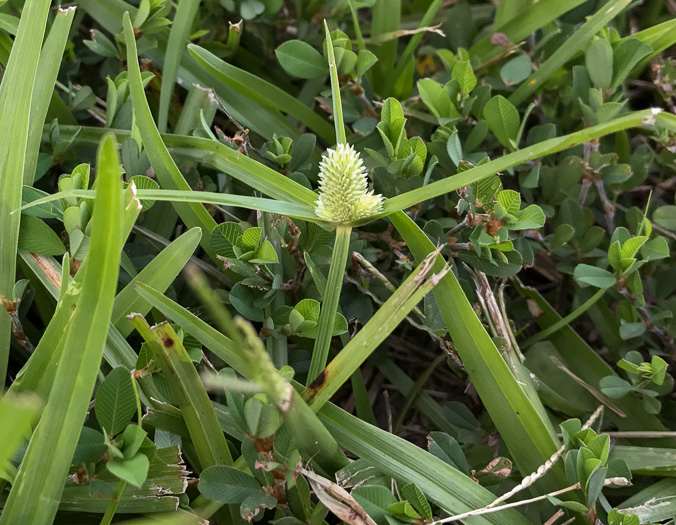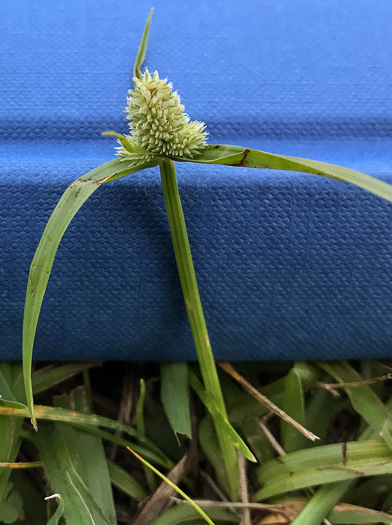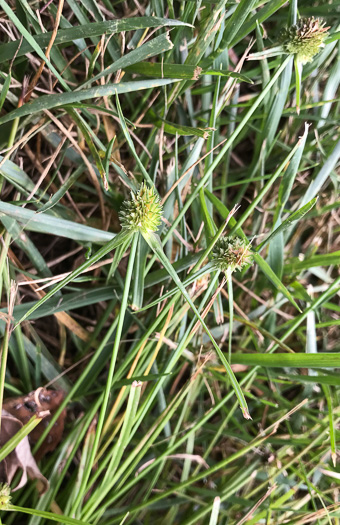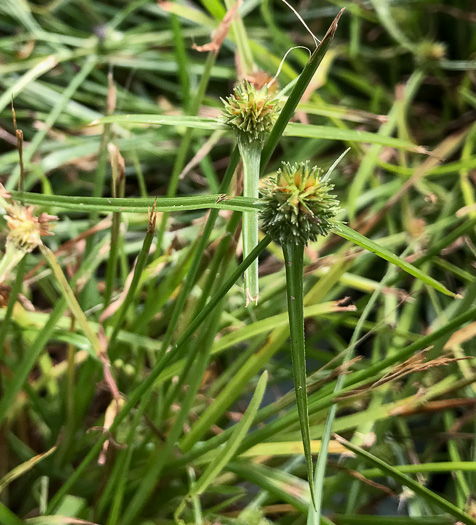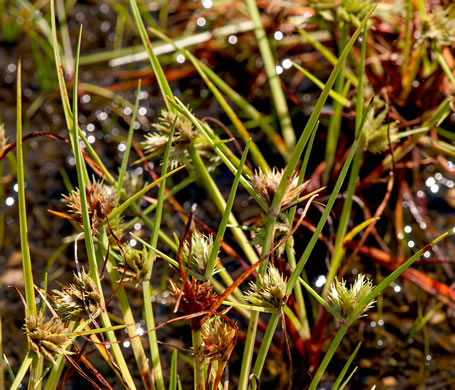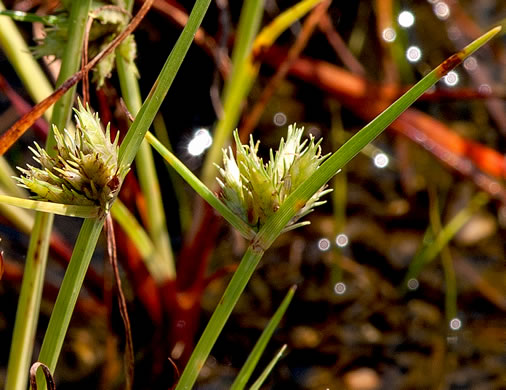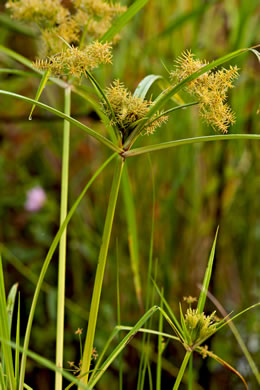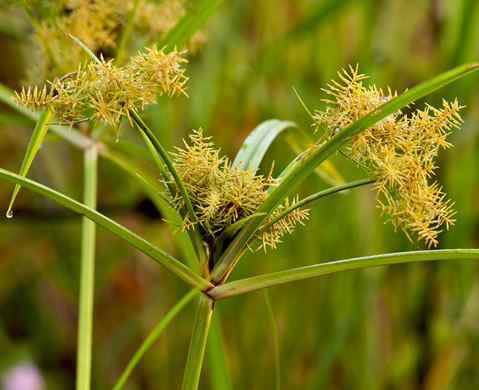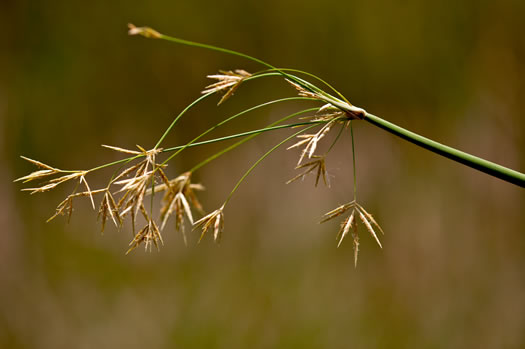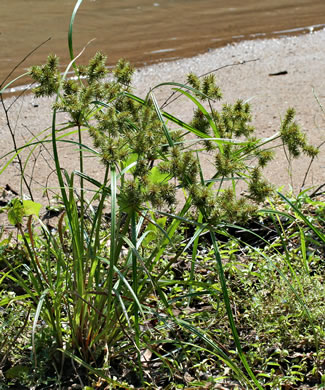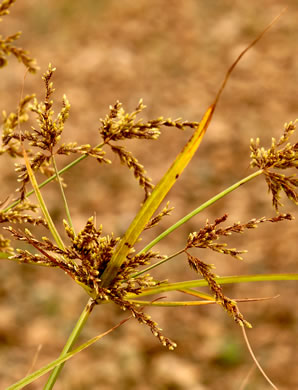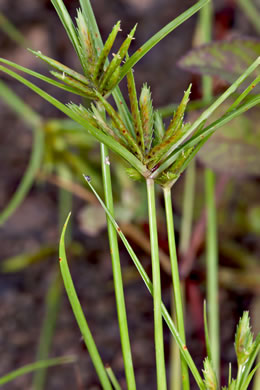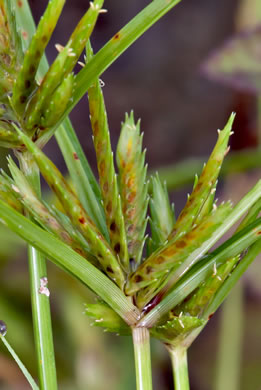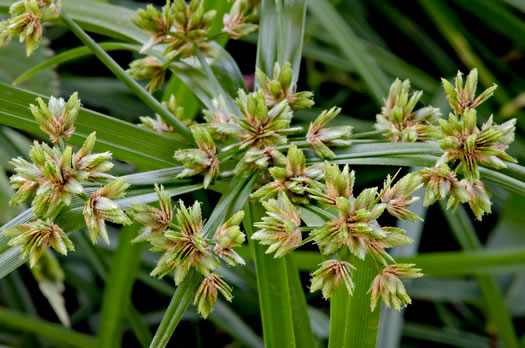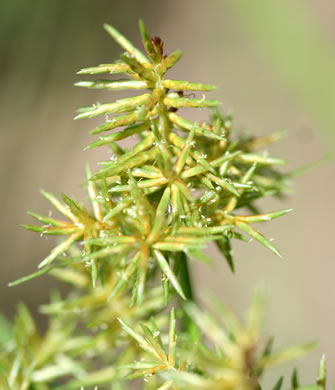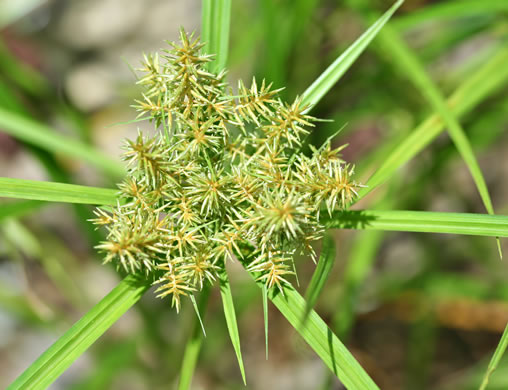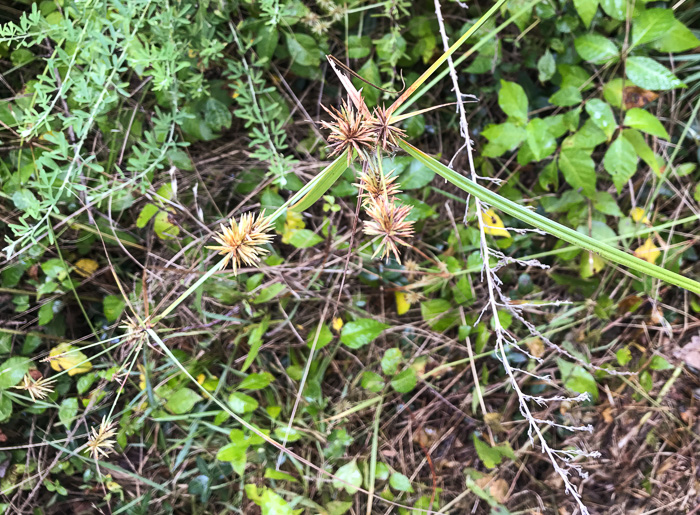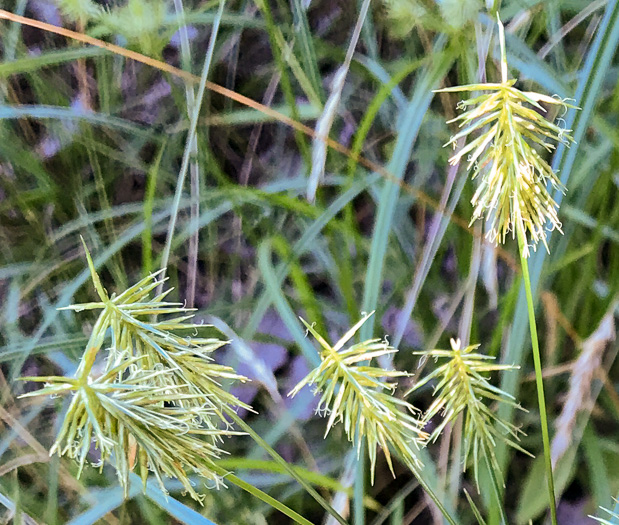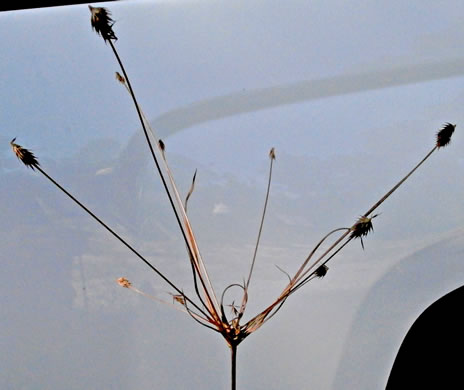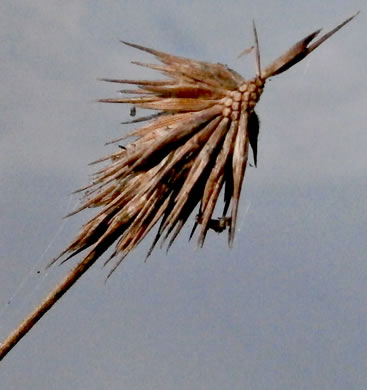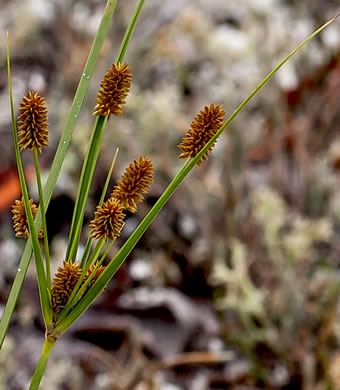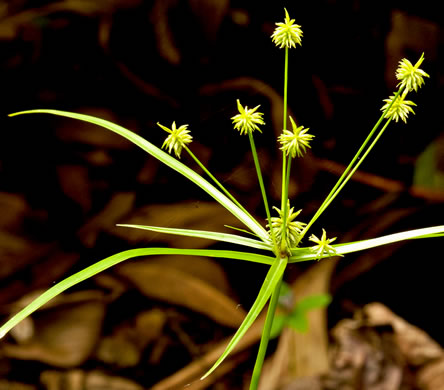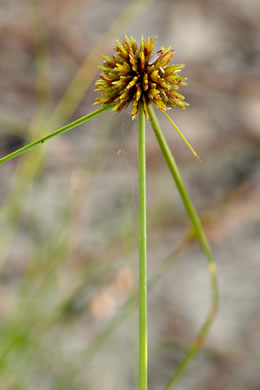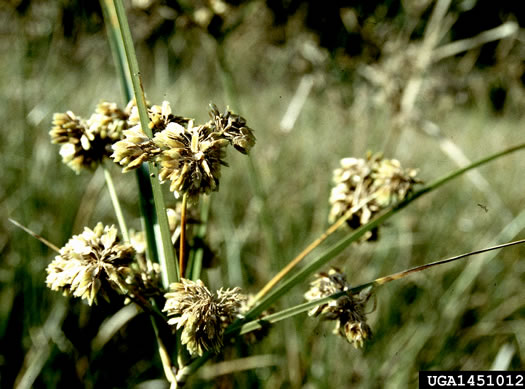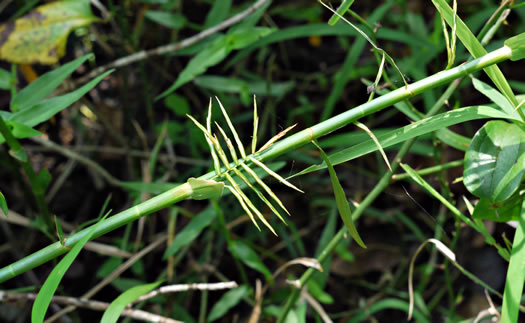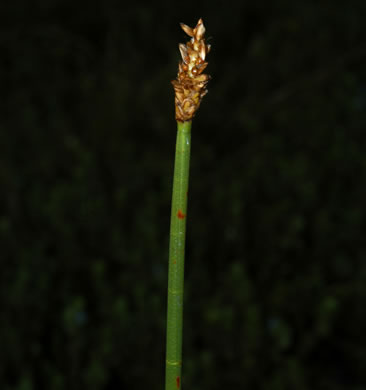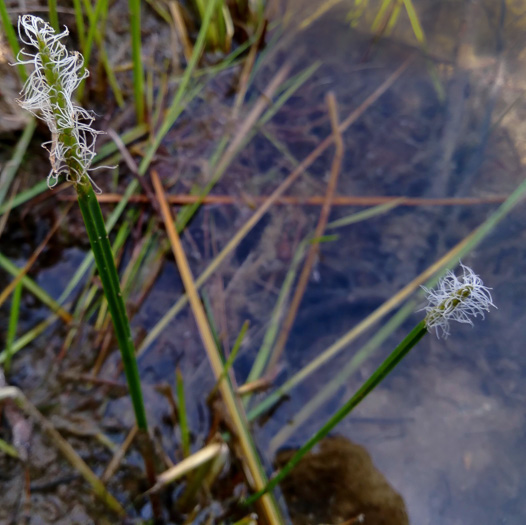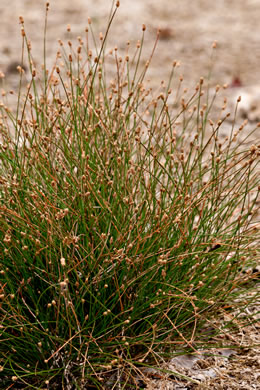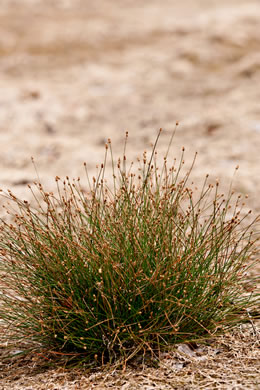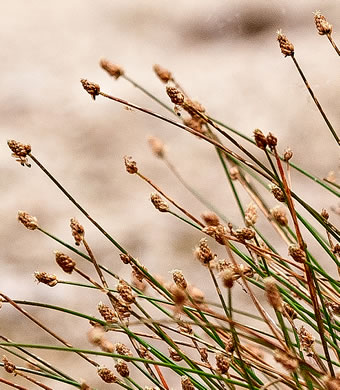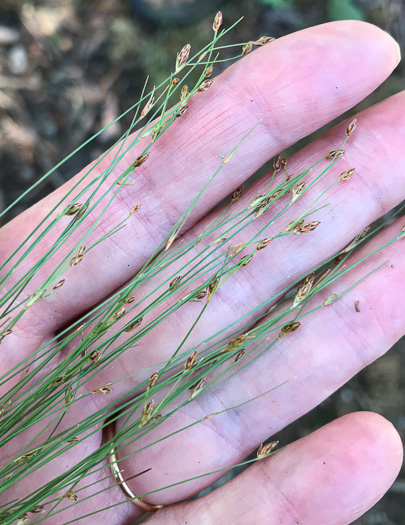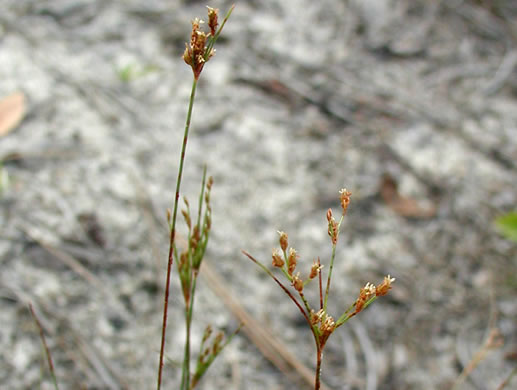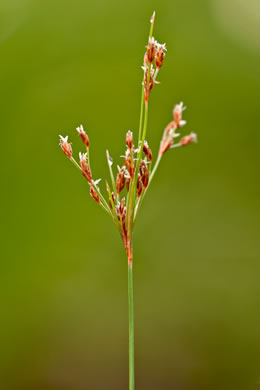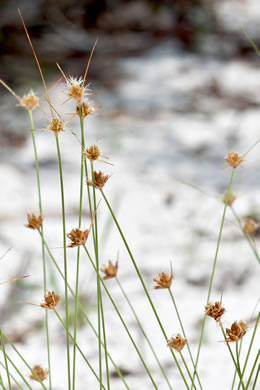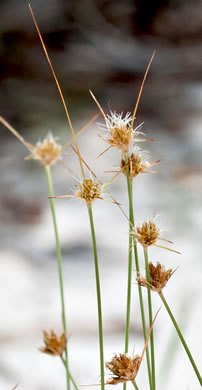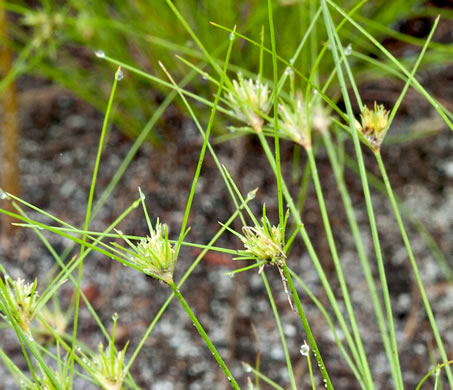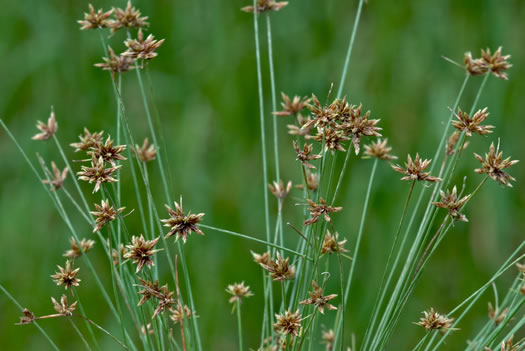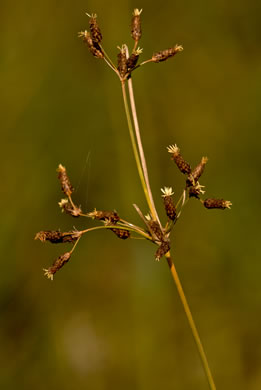Your search found 423 image(s) illustrating the term "spike." For a written explanation, click on "spike" in the Glossary.
PAGE 1 PAGE 2 PAGE 3 PAGE 4 PAGE 5 PAGE 6 PAGE 7 PAGE 8
To see larger pictures, click or hover over the thumbnails.
To go to the plant's detail page, click its name.
 Chinese Silvergrass,
Miscanthus sinensis
Chinese Silvergrass,
Miscanthus sinensis
Spikelets with a tuft of silky hairs about as long as glumes, per Manual of the Grasses of the United States (Hitchcock & Chase, 1950).
 Japanese Stiltgrass,
Microstegium vimineum
Japanese Stiltgrass,
Microstegium vimineum
Terminal, thin and spikelike raceme, to 3" long, per Nonnative Invasive Plants of Southern Forests (Miller, 2003).
 Japanese Stiltgrass,
Microstegium vimineum
Japanese Stiltgrass,
Microstegium vimineum
Spikelets in one to three terminal upright fingers, per Weeds of Southern Turfgrasses (Murphy et al., 1992).
 Silver Plumegrass,
Erianthus alopecuroides
Silver Plumegrass,
Erianthus alopecuroides
Awn twisted, bristle hairs from spikelet base longer than spikelet, per Forest Plants of the Southeast and Their Wildlife Uses (Miller & Miller, 2005).
 Silver Plumegrass,
Erianthus alopecuroides
Silver Plumegrass,
Erianthus alopecuroides
Callus beard exceeds spikelet. Awn spirally twisted, flattened basally, per Vascular Flora of the Carolinas (Radford, Ahles, & Bell, 1968).
 Bent-awn Plumegrass,
Erianthus contortus
Bent-awn Plumegrass,
Erianthus contortus
Callus hairs dense, from about half to nearly as long as the spikelet, per Weakley's Flora.
 Sugarcane Plumegrass,
Erianthus giganteus
Sugarcane Plumegrass,
Erianthus giganteus
Spikelets well separated at flowering, then expanding into a plumelike mass, per Atlantic Coastal Plain Wildflowers (Nelson, 2006).
 Sugarcane Plumegrass,
Erianthus giganteus
Sugarcane Plumegrass,
Erianthus giganteus
Callus beard exceeds spikelet. Awn nearly straight, terete, scaberulous, per Vascular Flora of the Carolinas (Radford, Ahles, & Bell, 1968).
 Hairy Jointgrass,
Arthraxon hispidus var. hispidus
Hairy Jointgrass,
Arthraxon hispidus var. hispidus
Spikelets not paired, unaccompanied by a vestige, per Weakley's Flora (2015).
 Common Little Bluestem,
Schizachyrium scoparium var. scoparium
Common Little Bluestem,
Schizachyrium scoparium var. scoparium
Flower spikes are solitary from long stalks at intervals along the stem, per Wildflowers of the Sandhills Region (Sorrie, 2011).
 Common Little Bluestem,
Schizachyrium scoparium var. scoparium
Common Little Bluestem,
Schizachyrium scoparium var. scoparium
Schizachyrium's spikes not split into two racemes, like those of Andropogon, per Wildflowers of the Sandhills Region (Sorrie, 2011).
 Johnsongrass,
Sorghum halepense
Johnsongrass,
Sorghum halepense
Spikelets paired: one silky and sessile, one stalked and smooth, both w awns, per Wildflowers of Tennessee (Carman, 2005).
 Yellow Indiangrass,
Sorghastrum nutans
Yellow Indiangrass,
Sorghastrum nutans
Spikelets 6-8 mm long, lanceolate, hirsute, the awns 10-15 mm long, per Manual of the Grasses of the United States (Hitchcock & Chase, 1950).
 Lopsided Indiangrass,
Sorghastrum secundum
Lopsided Indiangrass,
Sorghastrum secundum
Spikelets yellowish-brown, ~ 7mm long, pilose, with densely bearded callus, per Manual of the Grasses of the United States (Hitchcock & Chase, 1950).
 Elliot's Indiangrass,
Sorghastrum elliottii
Elliot's Indiangrass,
Sorghastrum elliottii
Spikelets 6-7mm long, the awns 25-35mm long, per Manual of the Grasses of the United States (Hitchcock & Chase, 1950).
 Corn,
Zea mays ssp. mays
Corn,
Zea mays ssp. mays
Staminate spikelets in a terminal, paniculate inflorescence, per Vascular Flora of the Carolinas (Radford, Ahles, & Bell, 1968).
 Gama Grass,
Tripsacum dactyloides var. dactyloides
Gama Grass,
Tripsacum dactyloides var. dactyloides
Flowers unisexual, male above female on the same spike, per Wildflowers of the Eastern United States (Duncan & Duncan, 1999).
 Centipede Grass,
Eremochloa ophiuroides
Centipede Grass,
Eremochloa ophiuroides
Fertile spikelets embedded in a fleshy rachis (resembling a rattail) or a cob, per Weakley's Flora.
 Centipede Grass,
Eremochloa ophiuroides
Centipede Grass,
Eremochloa ophiuroides
A solitary, terminal, 1-sided raceme of closely overlapping spikelets, per Flora of China.
 Annual Greenhead Sedge,
Cyperus hortensis
Annual Greenhead Sedge,
Cyperus hortensis
Spikes 1-3, greenish, cylindric to subglobose, sessile, per Vascular Flora of the Carolinas (Radford, Ahles, & Bell, 1968).
 Whitehead Sedge,
Cyperus sesquiflorus
Whitehead Sedge,
Cyperus sesquiflorus
1-3(4) ovoid to ellipsoid whitish spikes subtended by (2)3-4 horizontal bracts, per Flora of North America.
 Whitehead Sedge,
Cyperus sesquiflorus
Whitehead Sedge,
Cyperus sesquiflorus
A mat-forming, aromatic perennial with conspicuously white spikelets, per Manual of Vascular Plants of NE US & Adjacent Canada (Gleason & Cronquist, 1991).
 Crested Greenhead Sedge,
Cyperus metzii
Crested Greenhead Sedge,
Cyperus metzii
Inflorescences of former Kyliinga spp. are unbranched (the spikes sessile), per Weakley's Flora (2020).
 Crested Greenhead Sedge,
Cyperus metzii
Crested Greenhead Sedge,
Cyperus metzii
The solitary spike is subglobose, 6-10mm in diameter, per Flora of North America.
 Granite Flatsedge,
Cyperus granitophilus
Granite Flatsedge,
Cyperus granitophilus
Spikes congested, subglobose. Bracts 2-5, 1-8cm long, 1-2mm wide, per Vascular Flora of the Carolinas (Radford, Ahles, & Bell, 1968).
 Granite Flatsedge,
Cyperus granitophilus
Granite Flatsedge,
Cyperus granitophilus
Spikelets quadrangular in cross-section, per Weakley's Flora (2020).
 Fragrant Flatsedge,
Cyperus odoratus var. odoratus
Fragrant Flatsedge,
Cyperus odoratus var. odoratus
Bottle-brush shaped spike clusters radiating from whorl of leaf-like bracts, per Forest Plants of the Southeast and Their Wildlife Uses (Miller & Miller, 2005).
 Fragrant Flatsedge,
Cyperus odoratus var. odoratus
Fragrant Flatsedge,
Cyperus odoratus var. odoratus
Bracts numerous, 3-7mm wide. Spikes numerous, congested, loosely cylindric, per Vascular Flora of the Carolinas (Radford, Ahles, & Bell, 1968).
 jointed flatsedge,
Cyperus articulatus
jointed flatsedge,
Cyperus articulatus
Spikes usually numerous, congested, appearing as irregular clusters, per Vascular Flora of the Carolinas (Radford, Ahles, & Bell, 1968).
 Redroot Flatsedge,
Cyperus erythrorhizos
Redroot Flatsedge,
Cyperus erythrorhizos
Spikes numerous, congested, cylindrical. Central sessile, lateral rays unequal, per Vascular Flora of the Carolinas (Radford, Ahles, & Bell, 1968).
 Rice-field Flatsedge,
Cyperus iria
Rice-field Flatsedge,
Cyperus iria
Spikes numerous in irregularly ascending, umbellate clusters, per Vascular Flora of the Carolinas (Radford, Ahles, & Bell, 1968).
 Poorland Flatsedge,
Cyperus compressus
Poorland Flatsedge,
Cyperus compressus
Spikes 1-6, in subglobose clusters. Peduncles to 10cm long, per Vascular Flora of the Carolinas (Radford, Ahles, & Bell, 1968).
 Poorland Flatsedge,
Cyperus compressus
Poorland Flatsedge,
Cyperus compressus
Spikelets digitate or subdigitate, broadly linear to slightly tetragonal, per Vascular Flora of the Carolinas (Radford, Ahles, & Bell, 1968).
 Green Flatsedge,
Cyperus virens
Green Flatsedge,
Cyperus virens
Spikes numerous in congested umbellate clusters. Spikelets digitate, per Vascular Flora of the Carolinas (Radford, Ahles, & Bell, 1968).
 False Nutsedge,
Cyperus strigosus var. strigosus
False Nutsedge,
Cyperus strigosus var. strigosus
Spikelets pinnate, linear, usually many-flowered, 5-25mm long, 1.5mm broad, per Vascular Flora of the Carolinas (Radford, Ahles, & Bell, 1968).
 False Nutsedge,
Cyperus strigosus var. strigosus
False Nutsedge,
Cyperus strigosus var. strigosus
Spikes 5-10 or more, congested or open, narrowly to broadly cylindric, per Vascular Flora of the Carolinas (Radford, Ahles, & Bell, 1968).
 Many-flowered Flatsedge,
Cyperus lancastriensis
Many-flowered Flatsedge,
Cyperus lancastriensis
Leaves and inf. bracts mostly >10mm wide. Spikes dense; spikelets subterete, per Weakley's Flora (2020).
 Rough Flatsedge,
Cyperus retrofractus
Rough Flatsedge,
Cyperus retrofractus
Rays glabrous or rarely w a few hairs just below spike; longest ray shorter than longest bract, per Weakley's Flora (2023).
 Rough Flatsedge,
Cyperus retrofractus
Rough Flatsedge,
Cyperus retrofractus
Spikes strongly narrowed to the base; all but the uppermost spikelets strongly reflexed, per Weakley's Flora (2023).
 Starburst Flatsedge,
Cyperus plukenetii
Starburst Flatsedge,
Cyperus plukenetii
Rays scabrid [rough]; longest ray ≥ longest bract; spikes tight, burlike, turbinate [top-shaped], per Weakley's Flora (2023).
 Starburst Flatsedge,
Cyperus plukenetii
Starburst Flatsedge,
Cyperus plukenetii
Spikes strongly obovate, composed of many sharp, backward-oriented scales, per Wildflowers of the Sandhills Region (Sorrie, 2011).
 Pineland Flatsedge,
Cyperus retrorsus
Pineland Flatsedge,
Cyperus retrorsus
Spikes cylindric or subcylindric, less than 1cm broad, less than 3x as long, per Vascular Flora of the Carolinas (Radford, Ahles, & Bell, 1968).
 Baldwin's Flatsedge,
Cyperus croceus
Baldwin's Flatsedge,
Cyperus croceus
Spikes subglobose, dense, 5-20mm broad, per Vascular Flora of the Carolinas (Radford, Ahles, & Bell, 1968).
 Southeastern Flatsedge,
Cyperus filiculmis
Southeastern Flatsedge,
Cyperus filiculmis
Spikes subglobose, 5-30mm broad, per Vascular Flora of the Carolinas (Radford, Ahles, & Bell, 1968).
 Deep-rooted Sedge,
Cyperus entrerianus
Deep-rooted Sedge,
Cyperus entrerianus
5-11 rays to 13cm long, each terminated by a dense ~ capitate spike, per Cyperus entrerianus: A Little Known Aggressive Sedge in the Southeastern United States (Carter & Bryson, 1996).
 Threeway Sedge,
Dulichium arundinaceum var. arundinaceum
Threeway Sedge,
Dulichium arundinaceum var. arundinaceum
Short axillary clusters of spikelets (vs. Cyperus with terminal spikelets), per Wildflowers of the Eastern United States (Duncan & Duncan, 1999).
 Horsetail Spikerush,
Eleocharis equisetoides
Horsetail Spikerush,
Eleocharis equisetoides
Spikes many-flowered, not wider than stem; stem knotted or jointed, per Field Guide to the Grasses, Sedges & Rushes of the US (Knobel, 1899) (Faust, 1977).
 Squarestem Spikerush,
Eleocharis quadrangulata
Squarestem Spikerush,
Eleocharis quadrangulata
Flowers (scales) 50-100 per spike, arranged in obvious spiral rows, per Weakley's Flora (2020).
 Canada spikesedge,
Eleocharis geniculata
Canada spikesedge,
Eleocharis geniculata
Culms producing at least some fertile spikelets, per Weakley's Flora (2015).
 Canada spikesedge,
Eleocharis geniculata
Canada spikesedge,
Eleocharis geniculata
Spikes ovoid to subglobose; achene body 0.7-1.0 mm long, per Weakley's Flora (2015).
 Canada spikesedge,
Eleocharis geniculata
Canada spikesedge,
Eleocharis geniculata
Spike abruptly expanded from the culm, > 2x thick as culm immediately below, per Weakley's Flora (2015).
 Densetuft Hairsedge,
Bulbostylis capillaris ssp. capillaris
Densetuft Hairsedge,
Bulbostylis capillaris ssp. capillaris
Spikelets red-brown, ovoid to lanceoloid, 3-5mm, per Flora of North America.
 Savannah Hairsedge,
Bulbostylis ciliatifolia
Savannah Hairsedge,
Bulbostylis ciliatifolia
inflorescence a simple (rarely compound) umbel of few (3-9) lance-ovoid spikelets, per Weakley's Flora (2023).
 Elliott's Hairsedge,
Bulbostylis coarctata
Elliott's Hairsedge,
Bulbostylis coarctata
Inflorescence a compound (rarely simple) umbel of many (8-30) spikelets, per Weakley's Flora (2015).
 Ware's Hairsedge,
Bulbostylis warei
Ware's Hairsedge,
Bulbostylis warei
Spikelets in a dense solitary terminal cluster, per Vascular Flora of the Carolinas (Radford, Ahles, & Bell, 1968).
 Ware's Hairsedge,
Bulbostylis warei
Ware's Hairsedge,
Bulbostylis warei
Spikelets sessile, the inflorescence thus a capitate cluster, per Weakley's Flora.
 Sandy-field Hairsedge,
Bulbostylis stenophylla
Sandy-field Hairsedge,
Bulbostylis stenophylla
Inflorescence bracts many & conspicuous, much exceeding spikelet cluster, per Weakley's Flora (2015).
 Old World Hairsedge,
Bulbostylis barbata
Old World Hairsedge,
Bulbostylis barbata
Inflorescence bracts few & inconspicuous, none (1?) exceeding spikelet cluster, per Weakley's Flora.
 Old World Hairsedge,
Bulbostylis barbata
Old World Hairsedge,
Bulbostylis barbata
Spikelets sessile, the inflorescence thus a capitate cluster, per Weakley's Flora.
 Carolina Fimbry,
Fimbristylis caroliniana
Carolina Fimbry,
Fimbristylis caroliniana
Inflorescence terminal, cymose, with sessile and pedicellate spikelets, per Vascular Flora of the Carolinas (Radford, Ahles, & Bell, 1968).

